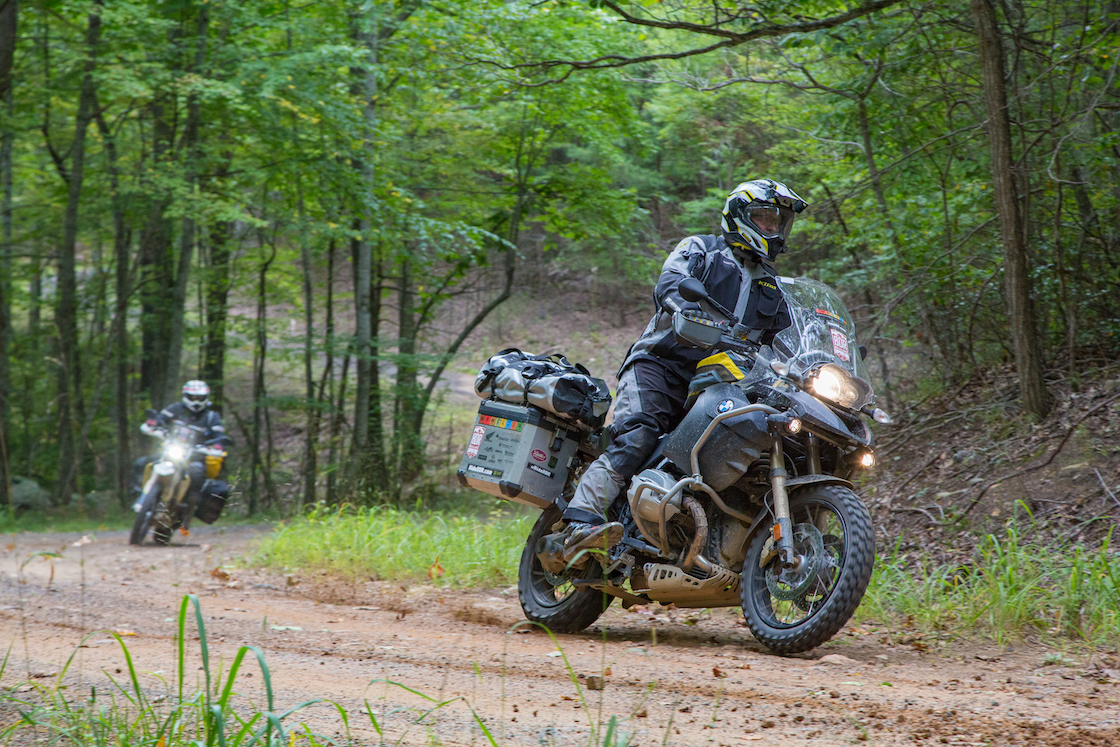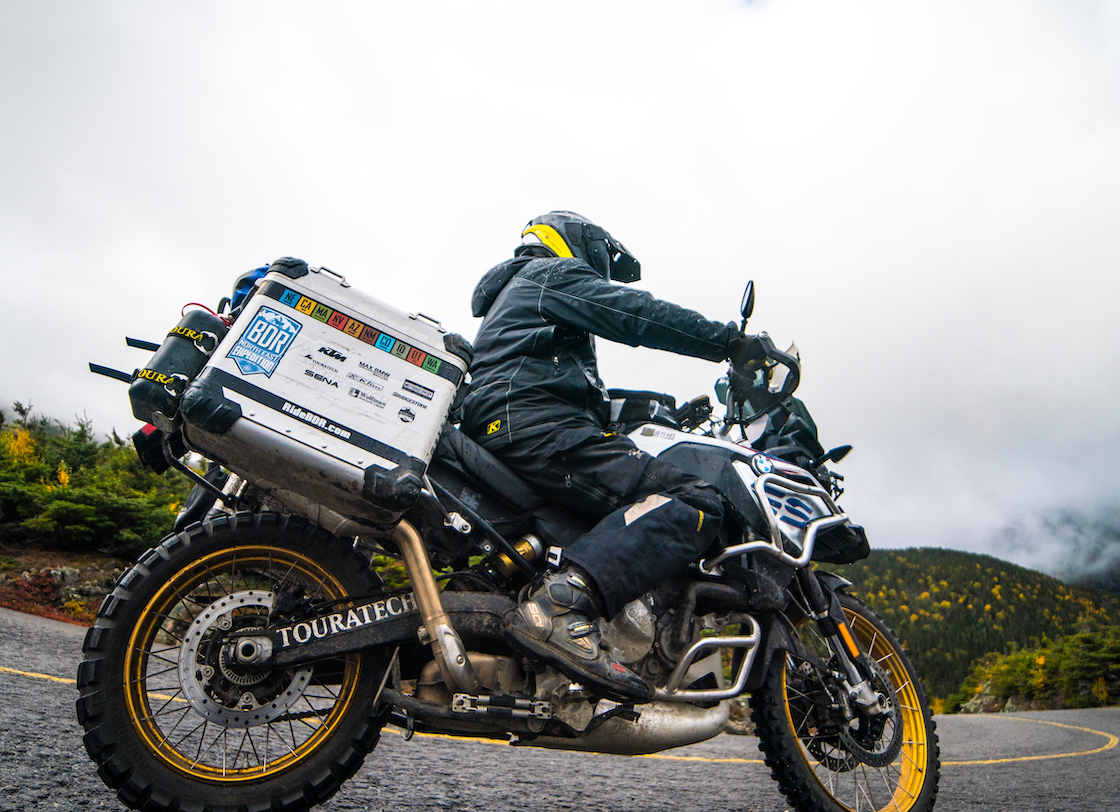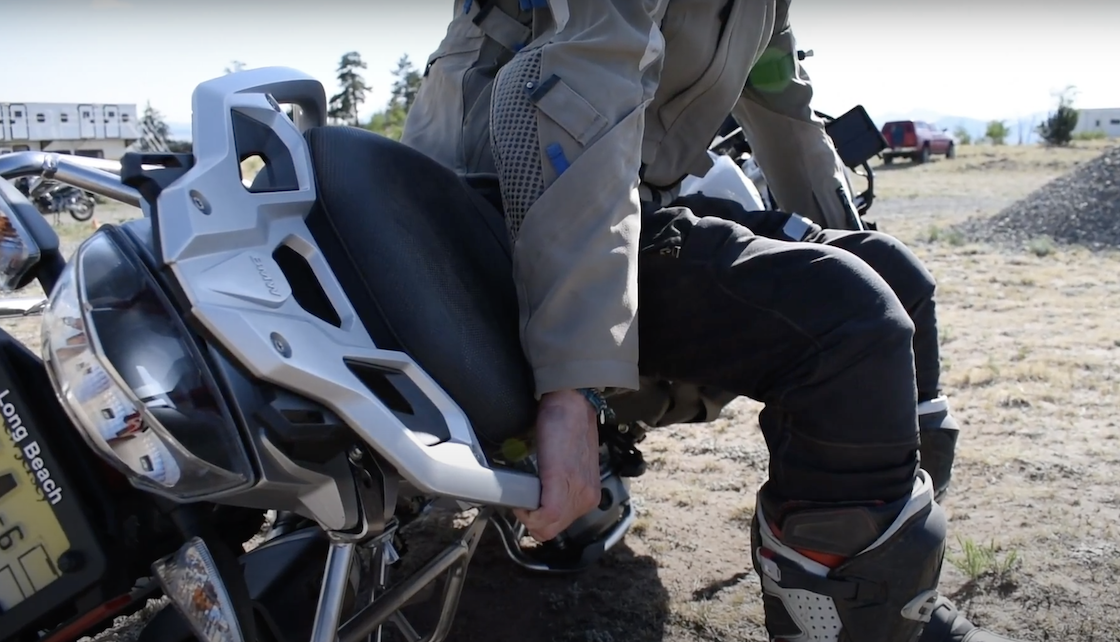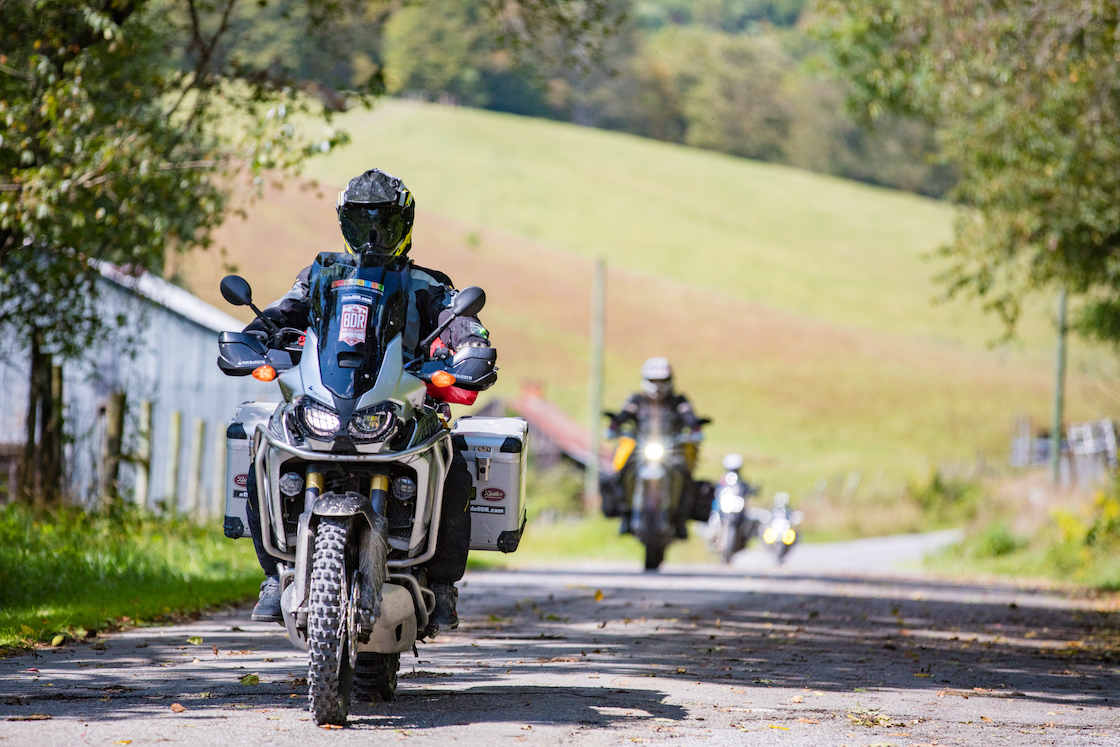
By Ron Lieback
Any sport worth doing is worth doing well, and ADV riding is no different. Nobody ever picks up a baseball bat for the first time and hits a home run, so why should we expect the same on an ADV bike?
Like all sports, mastering the fundamentals will go far in ensuring your continued success in this sport. Riding an adventure bike to the far depths of the earth is hard. The terrain will challenge your physical abilities, unlike anything you’ve ever done in your life.
That physical strain will chip away at your mental psyche, too. Staying strong upstairs starts by committing some basic skills to muscle memory. All the other advanced skills you learn after that will only be a bonus.
I’ve participated in multiple adventure riding schools over the past decade, and self train/practice technique weekly, especially on slow and smooth maneuvers in tight spaces. I recently participated in a two-day advanced adventure school at the BMW Rider Academy at BMW’s Performance Center in Greer, S.C., and many of the basics were further drilled into me.
Sometimes we get so caught up in advanced techniques we get sloppy with the basics that, well, after revisiting them aren’t so basic any longer.
Below I’ve put together five riding tips every ADV rider should know. Obviously, I could flood this page with more than five, but these “basics” need to be addressed as much as possible to be the best rider you can possibly be.

1. Proper ADV Body Position with Adjusted Controls
Many advanced riders may say, “here we go again,” but proper body position needs to be unconscious, and that begins with the endless practice of the basics.
So first things first. Where do you put yourself on the bike? Unlike street riding, with ADV riding, you will often find yourself going back and forth between sitting on the seat and standing on the pegs. You’ll be moving around a lot because where you put your weight is important. But for starters, you stand when you’re off-road, sit when you’re on-road.
While sitting, use the balls of your feet on the pegs. While standing, more of the middle of the foot so you can shift and control the rear brake while using all of your balance.
In simplest form, while steering, push the bike away from you when you’re trying to turn in the dirt while keeping your body straight up and not leaning into the turn. This keeps the weight distributed and allows the tires to bite into the dirt (read more about ADV motorcycle tire selection here.).
On the road, you generally want to tip your body mass into the turn (opposite from dirt riding) to help the motorcycle steer. This keeps more of the tire on the pavement, keeping the motorcycle planted.
Some riders get too caught up in proper positioning to the point they forget other fundamentals like properly adjusted controls. For example, you can be a master of using your body mass, either sitting or standing, to steer, but if your levers are nowhere near your fingers, you will get into trouble if you need to use them.
The point is to place your levers and bars within easy (and natural) reach of your fingers so you can work the controls and control the handlebar—and thus the motorcycle—when needed. If your arms tire while standing, your levers are likely not adjusted properly.
You are also likely putting too much weight on your arms and not using your feet to keep your balance and body planted.
And learn to use two or three fingers on the clutch and brake levers—any more and you’ll not be able to keep control of the motorcycle if the bars are under hard braking or acceleration.
Also, don’t our body type will determine exactly where to sit on the bike, but generally speaking, the natural shape of the bike will likely put you near the front of the tank. I was trained to have at least all four fingers (with gloves on) separating me from the gas tank.
Don’t forget the motorcycle manufacturers experiment with different seat and tank shapes to get the rider in a good position for the bike’s intended purpose, so sitting up close with the levers properly situated should put you in the driver’s seat once you get moving.

2. ADV Weight Distribution
Now that you know how to properly place your body to affect where the motorcycle goes, let’s get a bit deeper. Especially at slower speeds, offsetting the weight and center of gravity of the motorcycle with your own body weight helps the bike steer.
You probably already know that, but even the most advanced riders don’t utilize proper weight distribution when steering—especially while standing off-road at low speeds. The offset weight should allow you to fully lock the bars and not drop the bike (vision is a HUGE part of this also, which I’ll cover later).
But what you might have overlooked is the importance of where you place the weight of your luggage, as that has an impact on your bike’s handling and what you need to do as a rider to cope.
The proverbial rule of thumb is to keep your additional weight as low as possible and distributed evenly across the bike. For example, load panniers so their weights are as close as possible and put the heavier items at the bottom. Properly loaded bikes ease riding, especially in the slow and tight stuff.

3. Pick It Up
Here’s a harsh reality: sooner or later, you’ll drop your bike. Once you accept that fact, here’s what you do next: learn to pick it up.
The common method is to stand over your bike, lean over, and pick it up. But that’s terrible for your back—not to mention ineffective. Most of these bikes are heavy—a BMW R 1250 GS can be well over 650 pounds with packed bags.
Use the most powerful muscles you have—your legs—to pick up the bike. Instead of leaning over it, turn your back towards the fallen side, bend down, grab some stable points (usually the bar, subframe, tank, just anything that won’t move), keep your back straight, and walk backwards into the bike, lifting with your legs at the same time.
As the bike gets more vertical, the easier it’ll be. Just don’t push too hard and flip the bike over to the other side.
Here’s a great video from RawHyde Adventures on how to properly pick up a fallen ADV bike.

4. Smooth Inputs
To make a motorcycle do what you want, it’s best to be smooth with your inputs. Remember the Navy SEAL adage: Slow is smooth, smooth is fast. So, learn to ride smooth and slow, and the speed (and ease!) portions will occur naturally.
A jerky throttle or brake hand creates a wild and dangerous motorcycle. Sudden steering inputs usually don’t work out well. Smooth and deliberate input from the rider yields the same results from the motorcycle.
In that way, not only is the bike doing what you want, but it’s also giving you feedback. You can feel what the suspension is doing, how the tires are working, and whether any adjustments need to be made.
There are a few rare exceptions to this rule, especially in off-road situations, but generally speaking, a smooth rider is a happy rider—and a faster rider, if that’s your thing.

5. Keep Those Eyes Up!
I saved the best for last—likely because it challenges me often both on and off the road. It’s one of the oldest sayings in motorcycling, but it’s true: look where you want to go. The body (and in this case, the motorcycle) follows the eyes.
If you look down while riding, the whole world will fly by at lightning speed. It’s hard for the brain to process all of that—not to mention you can’t see where you’re going! If you look up and scan ahead, the brain has more time to process what’s in front of you.
This even helps keep your balance while going slow, something that challenges many riders, beginners, and advanced riders alike. Once you look down, you’ll lose focus and balance, and the bike usually ends up on the ground.
You can even try this when you’re not on the motorcycle. Walk around and look at the ground. You can’t go very fast, can you? And you certainly don’t know where you’re going. Now, look up and in front of you like you normally would. Much easier and faster to walk around, right? It’s the same concept on the bike. In off-road scenarios, scanning ahead will be very important when deciding which line or route to take, especially in the tight stuff.
This looking down problem happened to me at the BMW Rider Academy schooling. I challenged myself not to drop the bike during the two days of training, and I knew the only way for that to be remotely possible was to truly embrace every technique with 100-percent focus.
But during a mock-up race in some deep sand, I allowed the adrenaline to overcome my focus due to loving serious challenges. This made me take second—I dropped my bike because I looked down at a sand rut instead of looking ahead and letting my vision do the steering. I dropped the bike—and had to focus deeper on technique. Regardless, it was the only time I dropped my bike during training, but it helped confirm how fast a lack of looking ahead can prompt a fall.
Although many advanced techniques exist, these basics must be mastered—and often revisited—for successful riding. And successful riding means safer riding, which keeps us all happier human beings.
New riders should keep these points in mind and practice them when they ride, while veterans should remember these tips as refreshers of the fundamentals.
Again, these are just starting points. There are so many things to learn and practice when it comes to mastering the art of ADV riding. The beauty of this hobby is that perfection will never be reached—but it sure is fun to get close.
